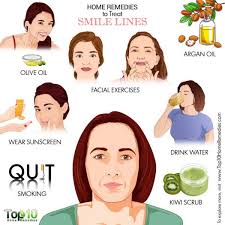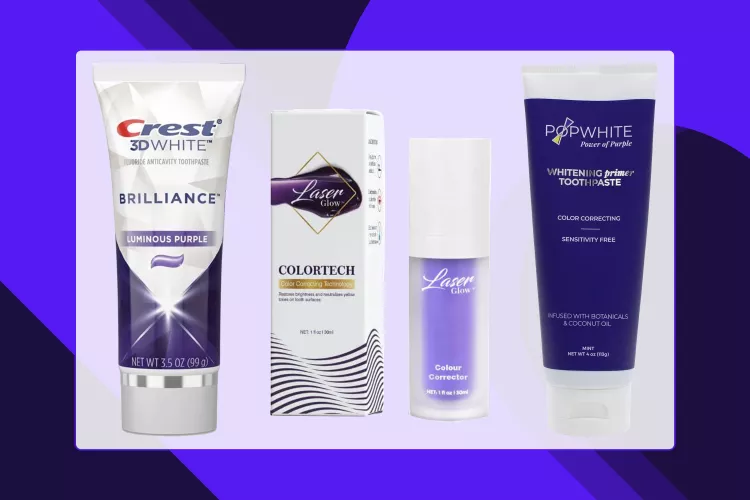Smile lines, often referred to as laugh lines, are wrinkles that typically appear along the sides of your mouth and sometimes around your eyes. These lines tend to become more pronounced when you smile and may naturally develop as part of the aging process. While these wrinkles are often unavoidable with age, there are several effective options available to help reduce their appearance.
Contents
What causes smile lines?
The main factors contributing to smile lines include:
- Reduced skin elasticity and collagen loss
- Skin dehydration
- Genetic predisposition
- Smoking habits
- Sun exposure and damage
What are my treatment options?
For treating smile lines, numerous options are available, from surgical solutions to non-surgical cosmetic procedures. Consulting a dermatologist or plastic surgeon experienced in wrinkle treatments can help you determine the best approach. Additionally, some over-the-counter (OTC) treatments may offer temporary results. Consider discussing the following treatment options with your doctor to find the most suitable method for you.
Injectable fillers
Injectable fillers are a popular, non-surgical option for reducing smile lines. These fillers, often containing hyaluronic acid, are injected into the creases from the nose to the mouth to create immediate results. Notable brands like Juvéderm and Restylane can offer effects that last several months and are reversible if needed. With repeated use, fillers may stimulate some scar tissue formation, potentially adding a more lasting effect.
Other options, such as Radiesse (containing calcium hydroxyapatite) and Sculptra (poly-L-lactic acid), are injected more deeply and may provide more long-term results, lasting between 6 and 12 months per session. Common side effects include temporary headaches and allergy-like reactions post-injection. According to the American Society for Dermatologic Surgery (ASDS), each filler treatment may cost up to $1,000.
Botox
Botulinum toxin injections, like Botox, Dysport, and Xeomin, also serve as popular injectable treatments, though they function differently from traditional fillers. Using a fine needle, a dermatologist injects the toxin into targeted areas to relax the underlying muscles, which reduces the appearance of lines and wrinkles. This treatment is especially effective for smile lines around the eyes, though it’s not as suitable for lines at the sides of the mouth.
These injections can be administered by qualified dermatologists, ophthalmologists, or plastic surgeons. Recovery time is brief, allowing most patients to resume normal activities, including exercise, after 24 hours. Potential side effects may include headaches, mild redness, discoloration, or irritation at the injection site. Botox effects last around three months, and to maintain these results, follow-up appointments are necessary.
Costs vary based on the number of units required but can range into the hundreds per session. It’s essential to compare the benefits, costs, and possible side effects of botulinum toxins and other fillers to find the best option for your needs.

Surgery
For those seeking more dramatic, long-lasting results, surgery may be a viable option. A facelift, or rhytidectomy, is one of the most comprehensive procedures for addressing smile lines, as it can smooth lines around the mouth and eyes in one operation. In some cases, a plastic surgeon might suggest combining a facelift with eyelid surgery to achieve a more rejuvenated overall appearance.
According to the American Society of Plastic Surgeons, the average cost of a facelift in recent years has been approximately $7,000. While it’s one of the more costly solutions, a facelift delivers extended results, often lasting years, though it does require a longer recovery period, typically around three months.
Despite its effectiveness, facelifts do carry risks, including infection, scarring, pain, and the rare possibility of nerve damage. To minimize these risks, choosing a board-certified, experienced plastic surgeon is essential. Additionally, patients should adhere to post-operative care instructions closely to support healing and reduce potential complications.
Laser treatments
Laser treatments are a form of skin resurfacing that works by gently removing the outermost layer of skin cells to reduce the appearance of wrinkles, fine lines, and age spots, revealing a smoother, fresher layer of skin beneath. This procedure stimulates collagen production, which can enhance skin texture and elasticity over time.
Common side effects include swelling, redness, and some discomfort, which typically ease within a few days. However, there is a risk of scarring and infection, especially if post-treatment care guidelines are not followed. According to the American Society for Dermatologic Surgery (ASDS), recovery usually takes between 1 and 3 weeks, depending on skin type and the intensity of the treatment.
Laser resurfacing is effective but may require additional sessions to maintain results, as its effects tend to last only a few months. Costs generally range from $1,750 to $2,300 per session, though this may vary based on the type of laser used and the area treated. To maximize results, patients should discuss their skin type and expectations with a certified dermatologist, who can help customize a plan tailored to their needs.
Collagen induction therapy
Collagen induction therapy, commonly known as microneedling or skin needling, is designed to boost natural collagen production within the skin, making it an effective treatment for addressing fine lines and wrinkles, like smile lines. With age, collagen levels naturally decline, leading to decreased elasticity and the formation of wrinkles. By stimulating collagen regeneration, microneedling helps plump up and firm the skin.
During the procedure, a specialized roller or pen equipped with tiny needles—such as the Eclipse Micropen—is used to create controlled micro-injuries on the skin’s surface. This triggers the body’s natural healing process, encouraging new collagen and elastin production. The American Academy of Dermatology Association (AAD) notes that results from microneedling are progressive, with full results often visible within nine months of treatment.
After each session, mild bruising, redness, or skin discoloration may occur as part of the healing process. Most individuals require a series of three to six treatments to achieve optimal results. With minimal downtime and gradual, lasting improvements, microneedling has become a popular, non-invasive option for those seeking a rejuvenated complexion and smoother skin texture.

OTC creams
Over-the-counter (OTC) creams provide a cost-effective option for treating wrinkles, offering a range of ingredients to help improve skin texture and reduce fine lines. Retinol, one of the most extensively researched anti-aging ingredients, is known for its ability to neutralize free radicals, which can contribute to the formation of wrinkles. A notable 2007 study reported significant improvements in the appearance of fine lines and wrinkles among participants who applied a 0.4% retinol lotion three times weekly for six months.
In addition to retinol, other beneficial ingredients like vitamin C, peptides, and hydroxy acids are commonly used in wrinkle-reducing creams. Vitamin C is valued for its brightening and collagen-boosting properties, while peptides work to strengthen the skin’s structure. Hydroxy acids gently exfoliate, promoting smoother, more radiant skin over time.
While these OTC options are non-invasive and relatively affordable, they typically require consistent use for several months to show visible effects. Results are not permanent, and some users may experience mild side effects such as redness, skin discoloration, rashes, or a mild burning sensation. Despite the slower onset, these creams remain popular for maintaining smoother, healthier skin when used consistently as part of a skincare regimen.
Home light treatment
In addition to OTC creams, at-home light therapy kits have become a popular option for targeting smile lines and fine lines around the eyes. One example is the FDA-approved SpectraLite Eye Care Pro, a device that utilizes LED light technology to stimulate collagen production specifically in the delicate eye area, aiming to reduce wrinkles and improve skin texture.
Designed for daily use, this device requires only three minutes per session, making it a convenient addition to a skincare routine. While light therapy devices are generally considered safe and have not been associated with significant side effects, the effectiveness of at-home LED kits can vary, and they may not provide the same results as professional treatments. Some users report improvements with consistent use, but individual results can differ based on skin type, age, and the device’s strength. For those seeking a gentle, non-invasive option, these devices can be a helpful supplement to other anti-aging treatments.

How to get rid of smile lines?
Preventing laugh lines and promoting healthy skin can often be achieved through mindful lifestyle choices made during young adulthood. One effective strategy is to apply sunscreen daily to protect your skin from sun damage, a leading cause of premature wrinkles.
Maintaining proper hydration is equally important aim to drink plenty of water throughout the day while limiting caffeine and alcohol intake, as both can have diuretic effects that dehydrate the skin. A consistent skincare routine is essential: cleanse your face once or twice daily and follow up with a moisturizer that suits your skin type to keep it supple and nourished.
Incorporating regular exercise and a diet rich in plant-based foods can also significantly enhance your skin’s health and elasticity. Additionally, if you smoke, consider quitting—this habit is known to accelerate wrinkle formation, including laugh lines. For those struggling to break free from smoking, various apps are available that can provide support and motivation throughout the process. By adopting these healthy habits, you can help maintain a youthful appearance and minimize the risk of developing smile lines over time.
Key Takeaways
Smile lines are a natural aspect of the aging process, and as you age, these lines may become more pronounced or increase in number. However, there are effective strategies you can implement to help minimize their appearance.
A wide array of treatment options exists for managing laugh lines. It’s advisable to consult with your healthcare provider to determine which methods align best with your individual needs and lifestyle. While surgical options are available, they aren’t always necessary, and less invasive treatments can be quite effective.
Additionally, you can take proactive measures to prevent smile lines from worsening over time. Keeping your skin well-hydrated and maintaining overall health are essential steps that can significantly contribute to preserving your skin’s youthful appearance. By adopting these practices, you can effectively manage smile lines and support your skin as it ages gracefully.









